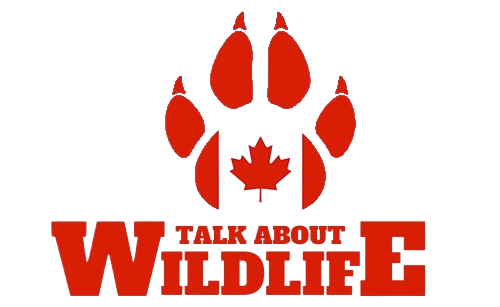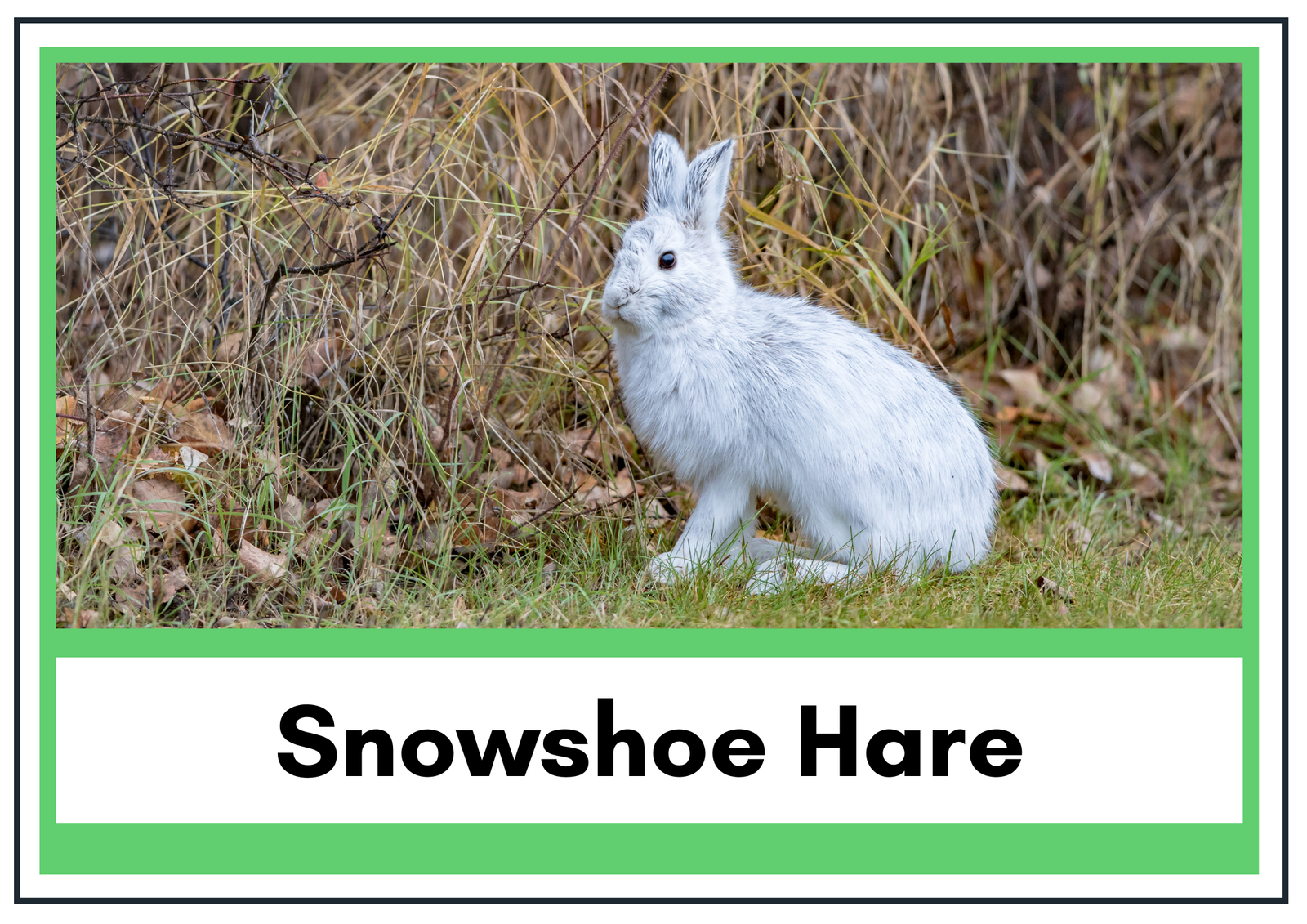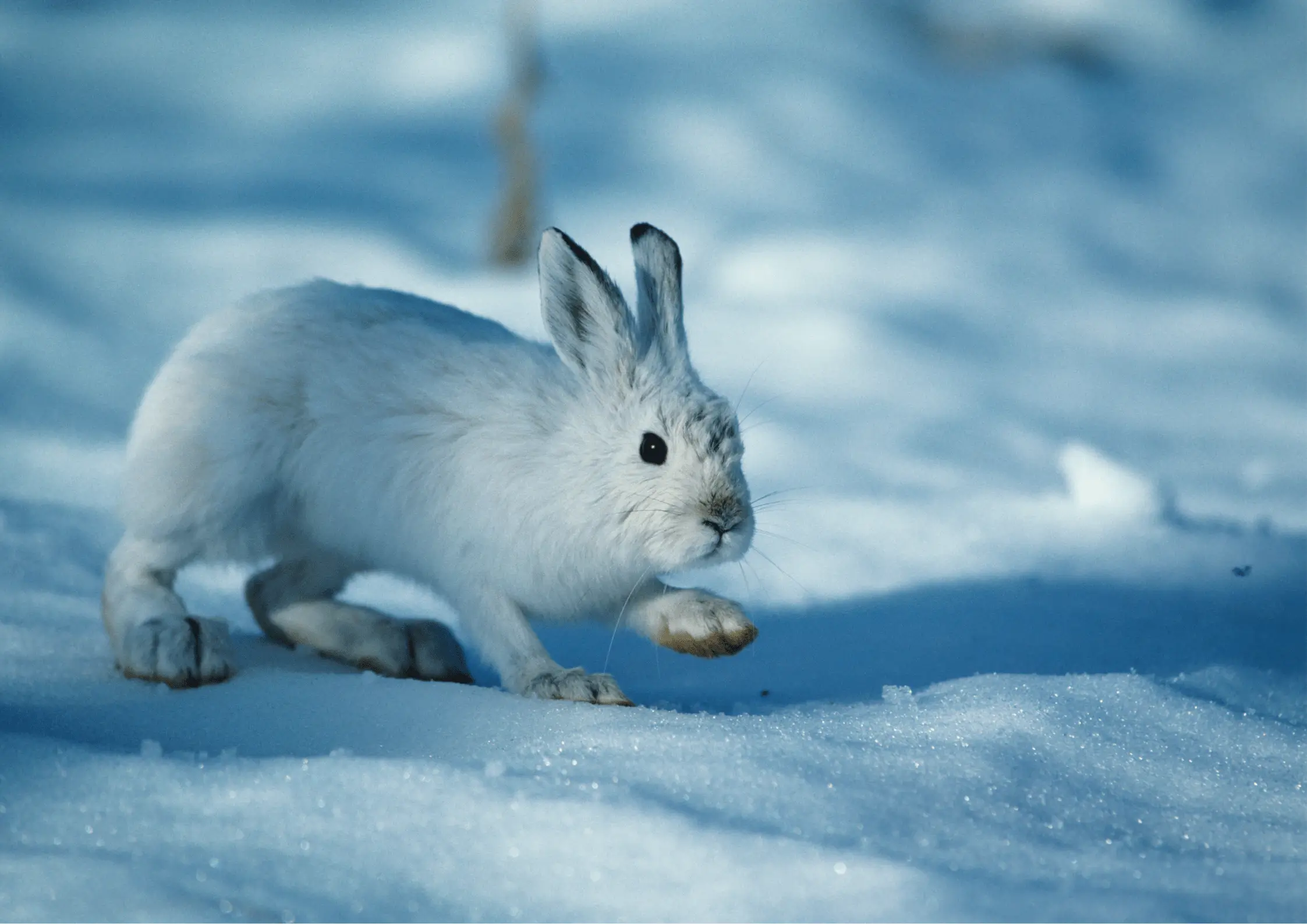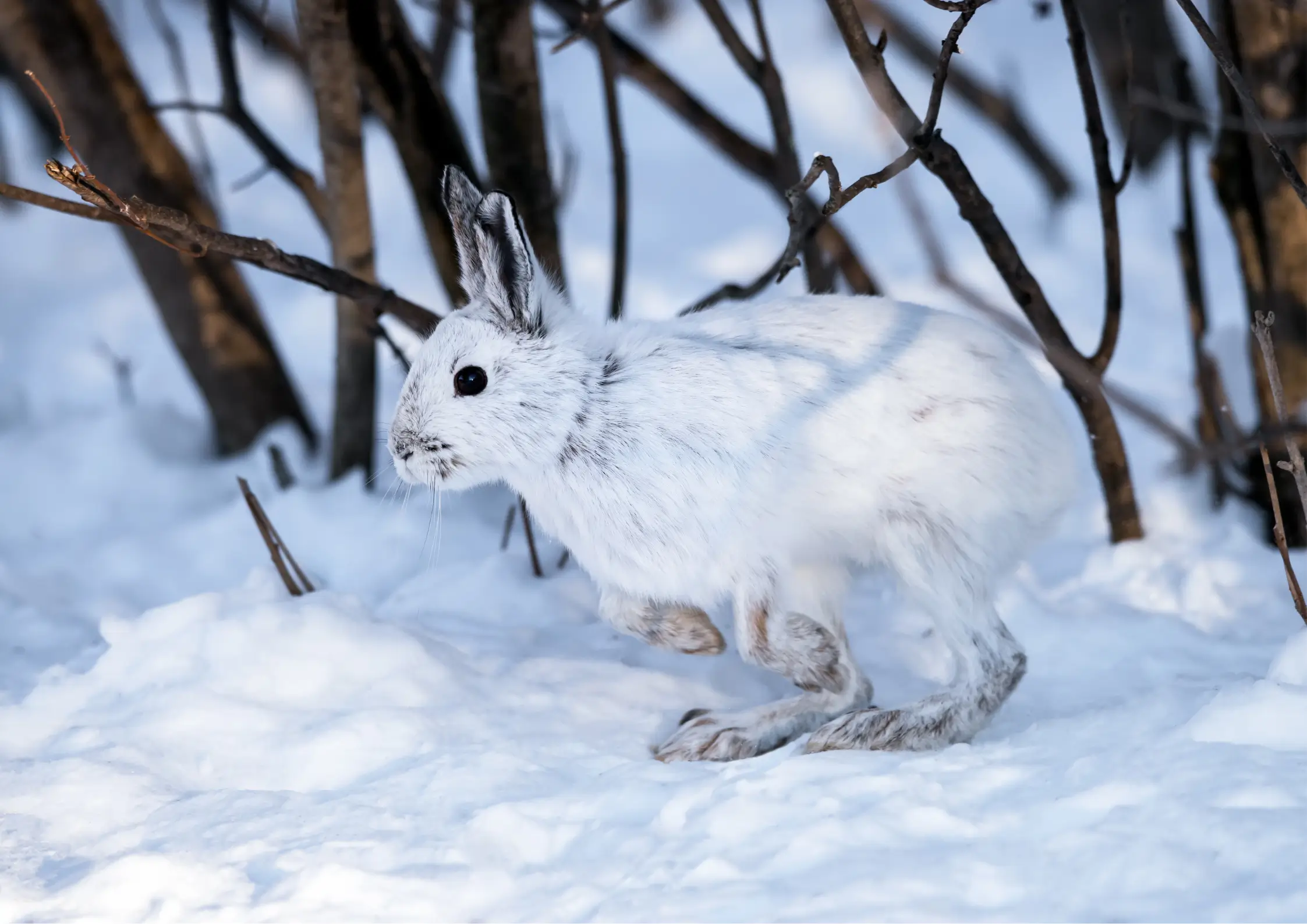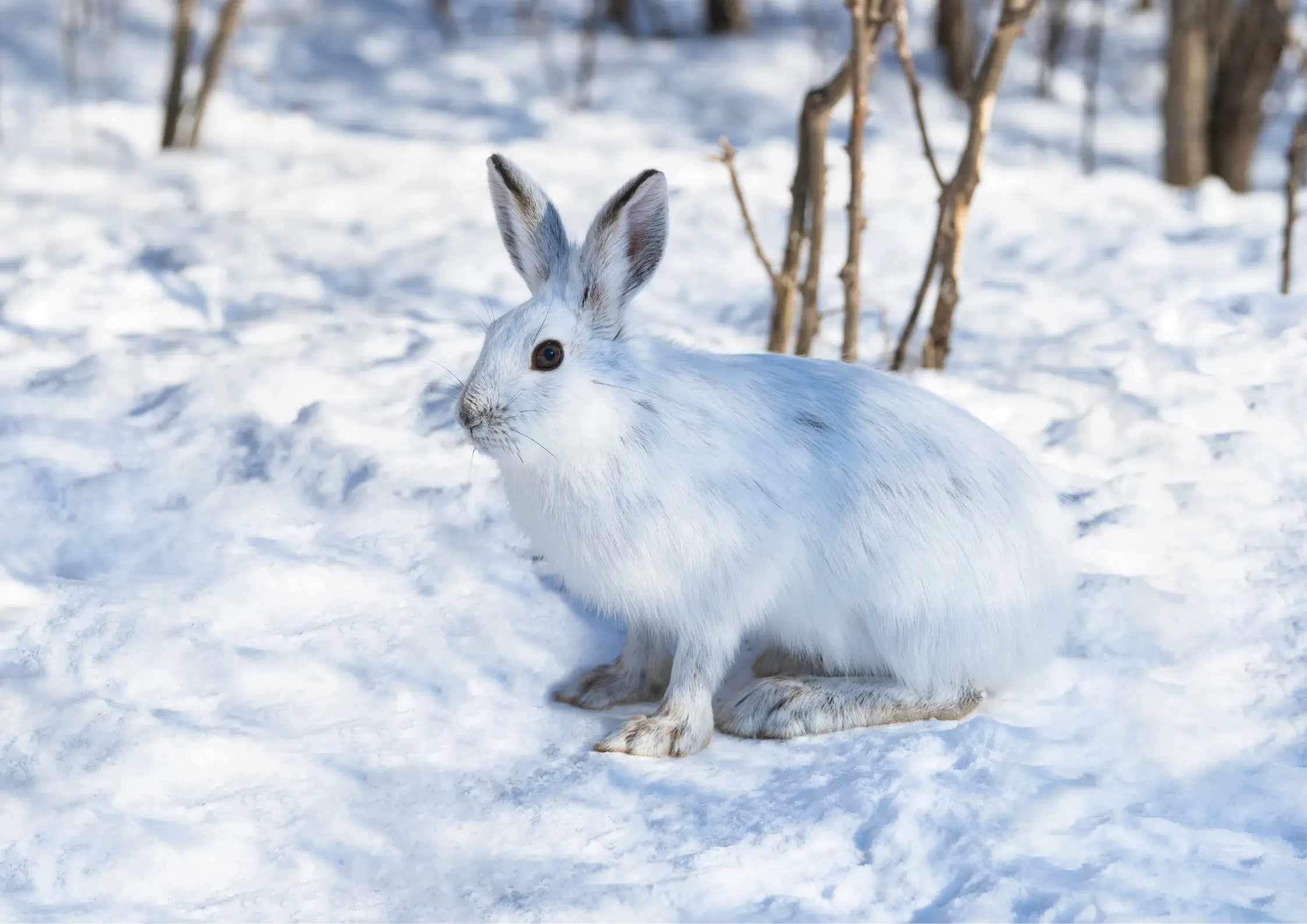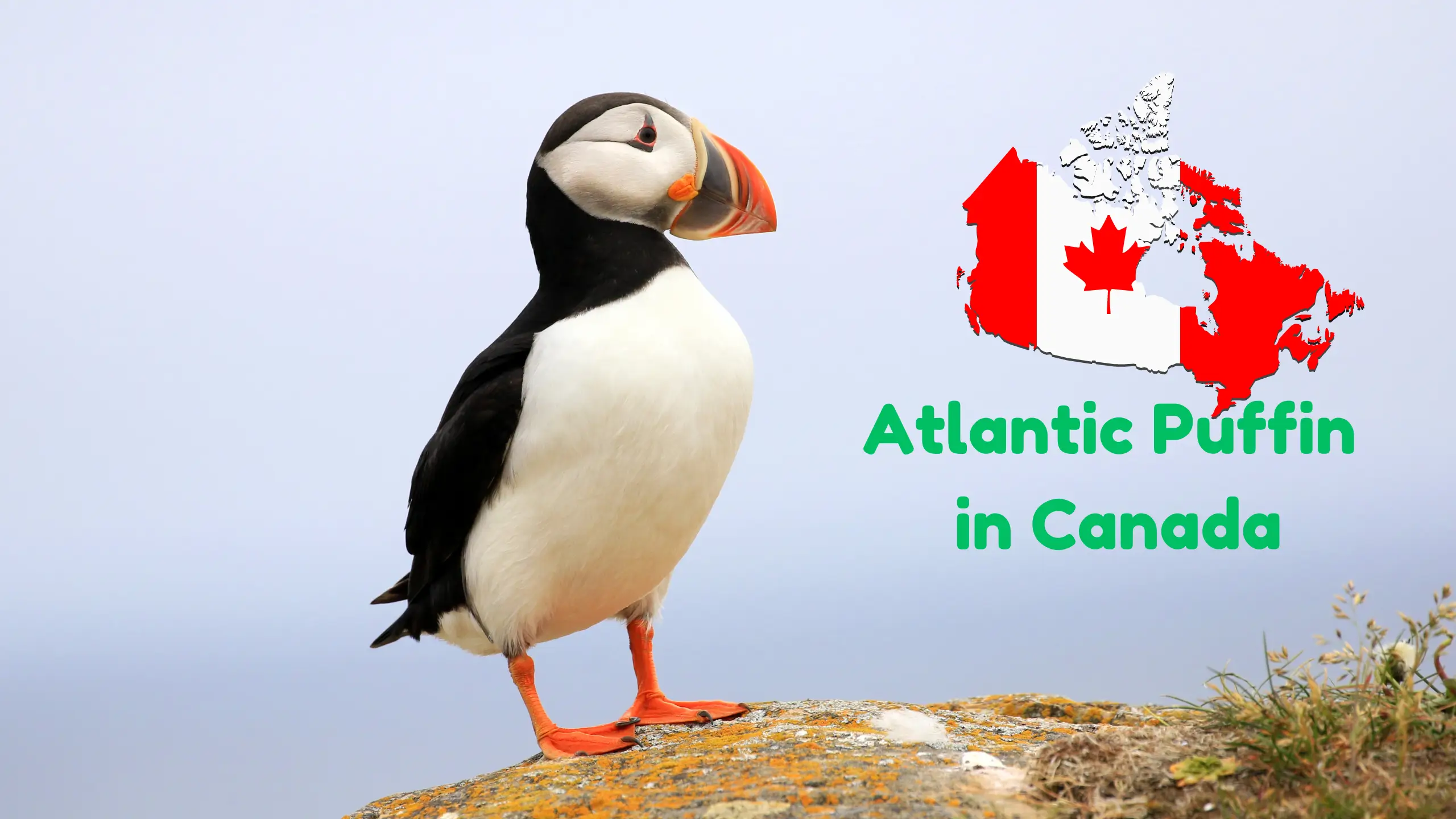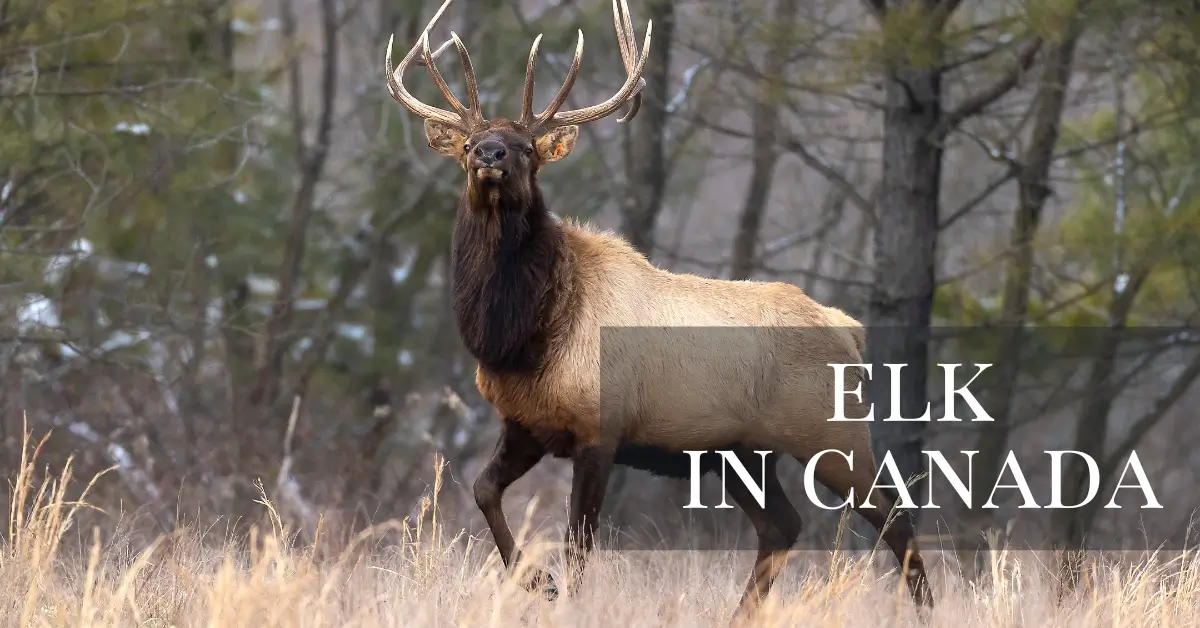The Snowshoe Hare is a small, furry animal found in Canada. It has large hind feet that help it move easily on snow. Its fur turns white to blend in with the snowy surroundings during winter while in summer, it turns brown to match the forest floor. They are known for their speed and quickness, which help them escape from predators like foxes and owls.
They are a popular game animal for hunters and an important food source for domestic communities across the Canadian territory. Protecting the habitats of snowshoe hares is vital for maintaining healthy ecosystems in wilderness areas.
Physical Characteristics and Features
Here are some attractive physical features of this animal that can catch your attention in the wild;
| Features | Relevant Information |
| Scientific Name | Lepus americanus |
| Life Span | Maximum up to 5 years in wild |
| Diet | Plants, Twigs, Bark, Evergreen needles, Leaves and Grasses |
| Length | 16-20 cm on average |
| Average Weight | 1 – 2 kgs |
| Role in Ecosystem | Food for Bobcat, Coyotes, Red foxes and Hawkes |
| Habitat | Swamps, Boreal forests, Northern forests, and Riverside thickets |
| Status of specie | Not Endangered |
Interesting Facts About Snowshoe Hare in Canada
Following are some interesting and catchy facts about these animals that can push you to capture their image during the visit:
1. True Canadian Species
Snowshoe Hares are native to North America, with a large portion of their habitat in Canada’s boreal forests.
2. Namesake Feet
They are named because of their big and fur wrapped hind feet. These “snowshoes” help them move easily on top of deep snow.
3. Lynx’s Favorite Meal
In Canada, Snowshoe Hares are the main food source for the Canada Lynx. Their populations are closely linked.
4. Dynamic Population
Snowshoe Hare numbers in Canada go through dramatic cycles, peaking every 8-11 years.
5. Forest Gardeners
Snowshoe Hares plays a big role in shaping Canadian forest ecosystems by eating plants and spreading seeds through their droppings.
6. Fast Moving Animals
These hares can run up to 43 km/h, helping them escape predators in the Canadian wilderness.
7. Northern Lights Observers
Snowshoe Hares are active at night, making them some of Canada’s frequent Aurora Borealis spectators.
8. Cold-Weather Champions
Their fur is so effective that Snowshoe Hares can stay warm in temperatures as low as -30°C which is common in Canadian winters.
9. Yukon’s Bounce
Snowshoe Hares are sometimes called “Canadian Bounce” in Yukon due to their distinctive hopping movement.
10. Climate Change Indicators
Changes in Snowshoe Hare populations and behaviors are helping Canadian scientists track the effects of climate change in northern ecosystems.
Sightseeing of Snowshoe Hare in Canada
The ideal places for seeing these snowshoe hares in Canadian territory are the forests and surrounding areas.
| Direction of the Country | Places Where Snowshoe Hare are Found |
| Western Territory | British Columbia and Alberta |
| Eastern Territory | Atlantic provinces, Newfoundland and Labrador |
| Northern Territory | Yukon, Nunavut and Northwest Territories |
Best Time and Place to See Snowshoe Hare
Following is the best time and place to see the snowshoe hares in the wild:
| Season | Months for Sightseeing |
| Winter | Late December to February |
| Autumn | November to Mid December |
The time can vary depending on the snowfall patterns in the areas inhabited by these animals.
